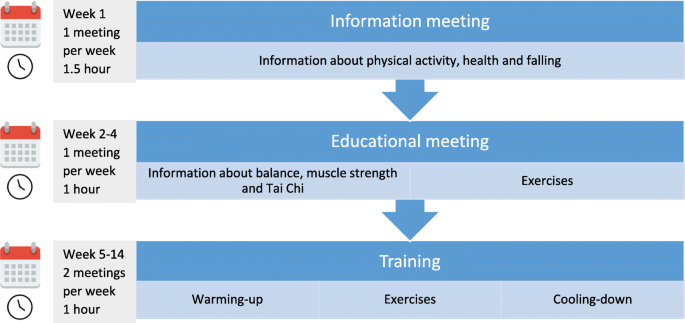The Ultimate Guide To Dementia Fall Risk
Table of ContentsThe 8-Minute Rule for Dementia Fall RiskSome Ideas on Dementia Fall Risk You Need To KnowSome Ideas on Dementia Fall Risk You Should KnowDementia Fall Risk Fundamentals Explained
A loss risk evaluation checks to see exactly how likely it is that you will certainly drop. It is primarily done for older grownups. The evaluation typically includes: This includes a series of inquiries regarding your general wellness and if you've had previous falls or problems with equilibrium, standing, and/or walking. These tools test your strength, equilibrium, and gait (the way you walk).STEADI includes testing, evaluating, and treatment. Treatments are suggestions that may reduce your risk of dropping. STEADI includes 3 steps: you for your risk of succumbing to your risk factors that can be boosted to try to stop falls (as an example, equilibrium troubles, impaired vision) to reduce your danger of dropping by making use of reliable strategies (for example, supplying education and learning and sources), you may be asked several concerns including: Have you dropped in the previous year? Do you really feel unsteady when standing or strolling? Are you stressed over falling?, your supplier will evaluate your toughness, balance, and stride, using the complying with loss assessment tools: This examination checks your gait.
After that you'll rest down once more. Your provider will certainly check how lengthy it takes you to do this. If it takes you 12 seconds or more, it might indicate you are at greater threat for a fall. This test checks toughness and balance. You'll being in a chair with your arms crossed over your chest.
The settings will certainly get tougher as you go. Stand with your feet side-by-side. Move one foot midway onward, so the instep is touching the huge toe of your various other foot. Relocate one foot totally in front of the other, so the toes are touching the heel of your various other foot.
Dementia Fall Risk Fundamentals Explained
The majority of drops take place as an outcome of several contributing factors; consequently, handling the risk of dropping begins with recognizing the factors that contribute to drop danger - Dementia Fall Risk. Several of the most appropriate risk variables consist of: Background of prior fallsChronic medical conditionsAcute illnessImpaired gait and balance, reduced extremity weaknessCognitive impairmentChanges in visionCertain risky medications and polypharmacyEnvironmental aspects can additionally raise the danger for drops, consisting of: Insufficient lightingUneven or harmed flooringWet or unsafe floorsMissing or harmed hand rails and grab barsDamaged or incorrectly equipped equipment, such as beds, wheelchairs, or walkersImproper use of assistive devicesInadequate guidance of individuals living in the NF, consisting of those who exhibit hostile behaviorsA successful loss threat management program requires a comprehensive professional evaluation, with input from all members of the interdisciplinary team

The treatment strategy must likewise consist of treatments that are system-based, such as those that advertise a safe atmosphere (appropriate lighting, hand rails, grab bars, and so on). The performance of the treatments should be reviewed occasionally, and the care strategy revised as required to mirror modifications in the loss risk analysis. Applying an autumn threat management system using evidence-based ideal method can minimize the prevalence useful source of drops in the NF, while limiting the potential for fall-related injuries.
Unknown Facts About Dementia Fall Risk
The AGS/BGS guideline go now suggests evaluating all adults aged 65 years and older for autumn threat every year. This screening consists of asking clients whether they have actually fallen 2 or more times in the previous year or looked for medical attention for a fall, or, if they have actually not fallen, whether they really feel unsteady when strolling.
People who have actually fallen as soon as without injury must have their equilibrium and stride examined; those with gait or equilibrium problems ought to receive additional assessment. A background of 1 autumn without injury and without gait or balance troubles does not call for additional analysis beyond continued annual loss danger screening. Dementia Fall Risk. A loss threat analysis is required as part of the Welcome to Medicare evaluation

Dementia Fall Risk Can Be Fun For Anyone
Recording a drops history is just one of the top quality signs for loss prevention and monitoring. An important component of danger assessment is a medication evaluation. A number of classes of medicines enhance fall risk (Table 2). Psychoactive medicines in particular are independent forecasters of falls. These medications tend to be sedating, alter the sensorium, and hinder equilibrium and gait.
Postural hypotension can usually be minimized by reducing the dose of blood pressurelowering medications this link and/or quiting drugs that have orthostatic hypotension as a negative effects. Use above-the-knee assistance tube and resting with the head of the bed elevated might likewise reduce postural reductions in high blood pressure. The suggested components of a fall-focused physical examination are revealed in Box 1.

A Yank time greater than or equal to 12 secs recommends high autumn danger. Being unable to stand up from a chair of knee height without using one's arms indicates enhanced loss threat.